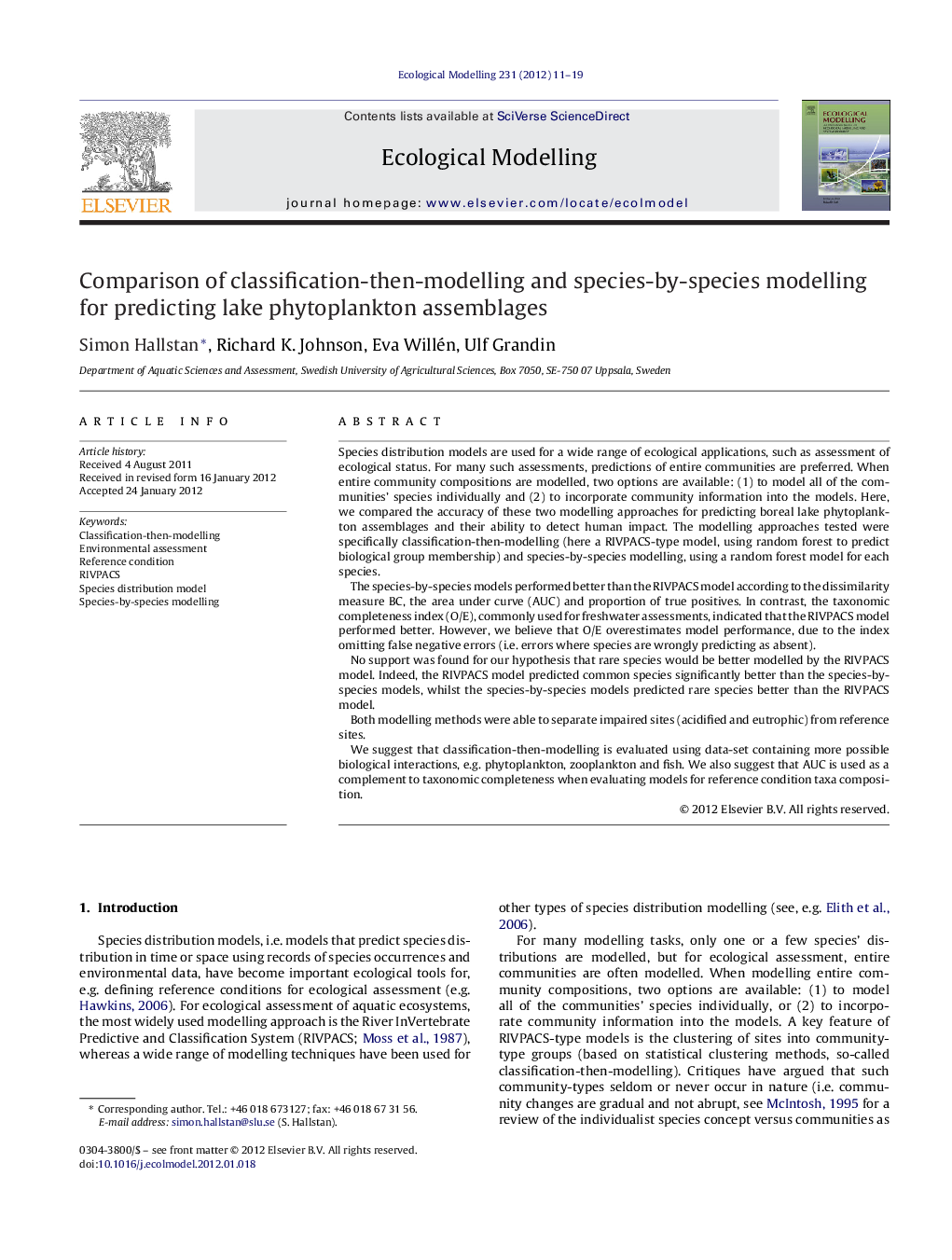| کد مقاله | کد نشریه | سال انتشار | مقاله انگلیسی | نسخه تمام متن |
|---|---|---|---|---|
| 6297301 | 1617512 | 2012 | 9 صفحه PDF | دانلود رایگان |

Species distribution models are used for a wide range of ecological applications, such as assessment of ecological status. For many such assessments, predictions of entire communities are preferred. When entire community compositions are modelled, two options are available: (1) to model all of the communities' species individually and (2) to incorporate community information into the models. Here, we compared the accuracy of these two modelling approaches for predicting boreal lake phytoplankton assemblages and their ability to detect human impact. The modelling approaches tested were specifically classification-then-modelling (here a RIVPACS-type model, using random forest to predict biological group membership) and species-by-species modelling, using a random forest model for each species.The species-by-species models performed better than the RIVPACS model according to the dissimilarity measure BC, the area under curve (AUC) and proportion of true positives. In contrast, the taxonomic completeness index (O/E), commonly used for freshwater assessments, indicated that the RIVPACS model performed better. However, we believe that O/E overestimates model performance, due to the index omitting false negative errors (i.e. errors where species are wrongly predicting as absent).No support was found for our hypothesis that rare species would be better modelled by the RIVPACS model. Indeed, the RIVPACS model predicted common species significantly better than the species-by-species models, whilst the species-by-species models predicted rare species better than the RIVPACS model.Both modelling methods were able to separate impaired sites (acidified and eutrophic) from reference sites.We suggest that classification-then-modelling is evaluated using data-set containing more possible biological interactions, e.g. phytoplankton, zooplankton and fish. We also suggest that AUC is used as a complement to taxonomic completeness when evaluating models for reference condition taxa composition.
⺠Models for entire biological communities are used in environmental assessment. ⺠In this study we compared two modelling approaches: species-by-species and community based. ⺠The species-by-species models were more accurate than the community model. ⺠The taxonomic completeness index overestimates model performance. ⺠Area under curve (AUC) is a better index for model evaluation.
Journal: Ecological Modelling - Volume 231, 24 April 2012, Pages 11-19